The Xiaomi Mi Note Pro and Mi Note Review
by Joshua Ho on September 11, 2015 9:00 AM ESTDisplay
For those that are well-versed in smartphones, it probably goes without saying why display quality is important. However, for those that don’t spend their lives reading about these issues, it is not necessarily all that obvious what makes a great display. It also won’t necessarily be obvious whether display quality really matters after a certain extent. As we’ll soon see, it turns out that there are a number of factors that influence display quality that won’t be on any normal specification list. There are some obvious metrics to look at like maximum brightness and static contrast, but something like color reproduction is often intensely personal. What looks great to some people might be excessively neon to others. What looks realistic and natural to some might be dull and dead to others.
In order to try and bring some level of objectivity to these issues, we rely on an external professional equipment (spectrophotometer and colorimeter) to quantify our display observations. For our spectrophotometer and colorimeter, we’ve standardized on X-Rite’s i1Pro2 and i1DisplayPro respectively. In order to effectively use this hardware, we also use SpectraCal’s CalMAN 5 with a custom workflow to record data and present it in a useful manner. To try and make our color observations somewhat objective we’ve elected to test color reproduction against the sRGB gamut, which is the standard for all web content and color in general, along with a gamma curve of power 2.2.
Mi Note
Mi Note Pro
In the case of the Xiaomi Mi Note and Mi Note Pro, we see two different kinds of displays from the same vendor. For the Mi Note, a JDI 1080p LCD is used while for the Mi Note Pro we see a JDI FBC20 1440p LCD. Both have a full RGB stripe, so it’s important to keep in mind that an AMOLED display of the same resolution will often have less perceived resolution due to the difference in subpixel arrangement. Subjectively, the resolution difference here is surprisingly small between the two, but I suspect that this is because the Mi Note Pro has a rather obvious ITO grid that can affect display clarity.
Color shifting with respect to viewing angles with both is subjectively relatively low, but there are some problems with contrast decreases/uneven luminance shifts that happen when you rotate the display at a constant viewing angle with something other than pure black on the display. I would say that I can probably count on one hand the number of LCD-equipped phones that don’t exhibit this problem though like the HTC One M9+, iPhone 6, and the LG G4.
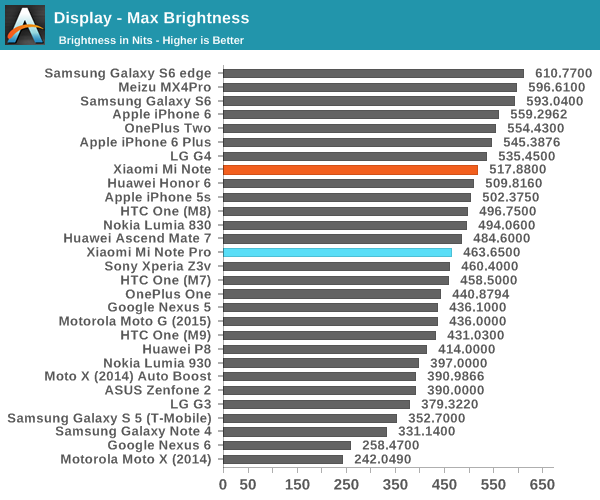
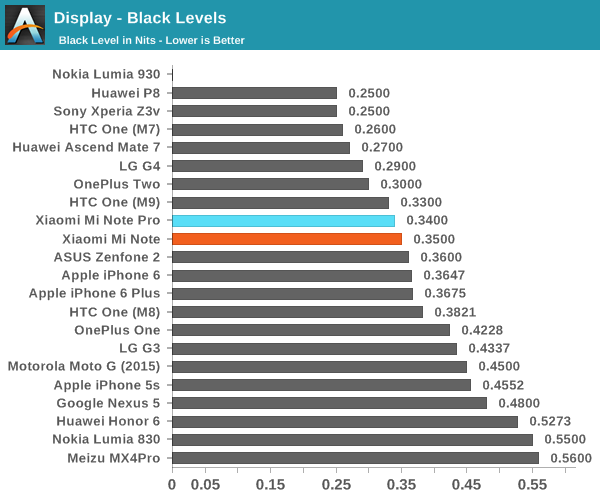
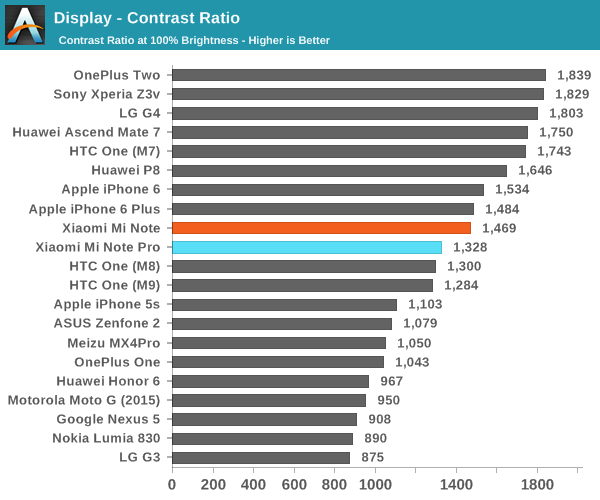
Moving on past some subjective observations, we can take a look at display luminance and contrast, which generally is a strong determinant for outdoor visibility in most cases as reflectance tends to be mostly similar amongst smartphones today. In this test, we can clearly see a difference between the two displays as the 1440p display does end up dimmer with reduced contrast. However, due to the sunlight display feature of the Mi Note Pro in practice I actually found it to have a similar, if not better outdoor visibility when compared against the Mi Note.
For those that are unfamiliar with what Xiaomi’s Sunlight Display feature is, this effectively an implementation of Apical’s Assertive Display technology. This technology is a form of content-adaptive backlight control in which the gamma and some other characteristics of the displayed image are altered in order to increase the visibility of darker aspects of the display, while retaining apparent contrast within the image so it doesn’t look washed out. For those that don’t care about the technology behind it, all that needs to be said is that it absolutely works, and it works incredibly well at improving sunlight visibility.
Mi Note
Mi Note Pro
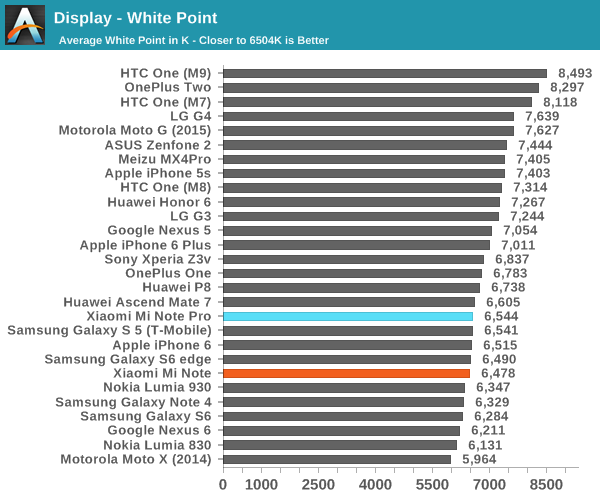
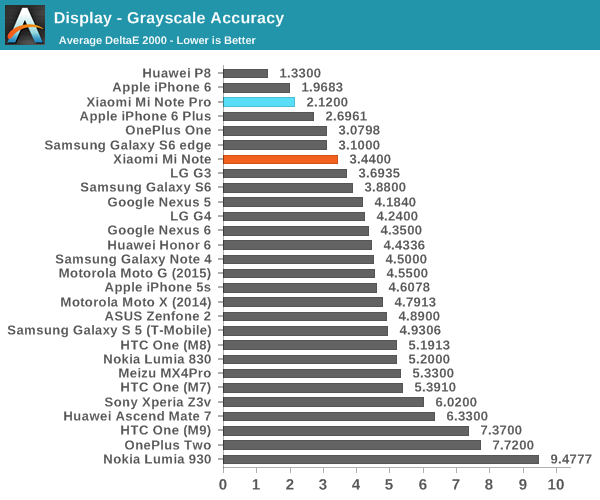
In our grayscale test, the Mi Note and Mi Note Pro were both set to standard contrast, but the Mi Note also required an extra adjustment to the “cool” color temperature as the “neutral” and “warm” were both extremely warm/red. After doing these changes, you can see just how well calibrated the Mi Note and Mi Note Pro are in grayscale. The Mi Note isn’t quite perfectly consistent, but the extra money you pay for the Mi Note Pro seems to have gone into turning good into great. In both cases, it’s interesting to note that the gamma curve is such that gamma is reduced near black, but raised near white, likely done to improve contrast in the near-white region.
Mi Note
Mi Note Pro
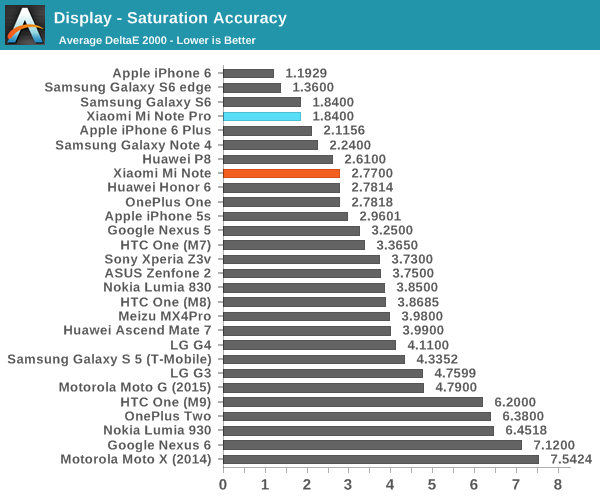
Moving on to the saturation/gamut test, both are fully capable of adhering to sRGB gamut. The Mi Note does have some strangeness going on with the gamut control, but overall calibration is acceptable as average error ends up below 3. The extra money that you pay for the Mi Note Pro at least partially goes into calibration, as the Mi Note Pro has incredibly well-calibrated saturation sweeps in this test, and follows the sRGB gamut very closely.
Mi Note
Mi Note Pro
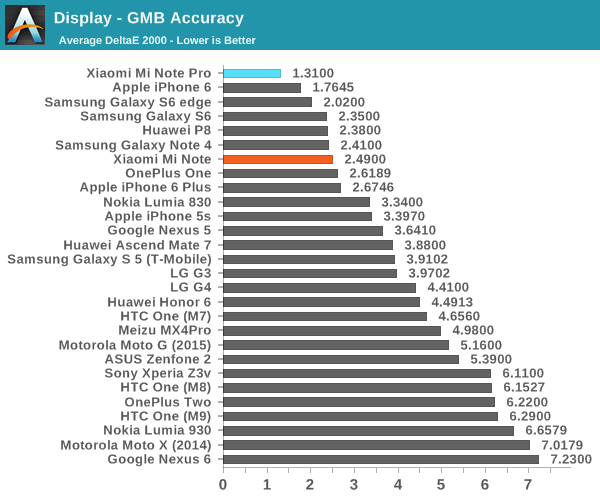
In the ColorChecker test, we see a similar pattern. The Mi Note delivers acceptable color calibration across the board with good hue accuracy, but the Mi Note Pro reaches almost absurd levels of calibration accuracy. There’s really not a lot of reason to improve color calibration past the point that Xiaomi has reached here, which is surprising when a number of OEMs continue to avoid proper sRGB calibrations. The Mi Note Pro is arguably better here relative to the Mi Note, as you get a higher resolution and better color calibration, but the difference in resolution and color calibration could be considered to be relatively minor. Both phablets have great displays with no real reservations.


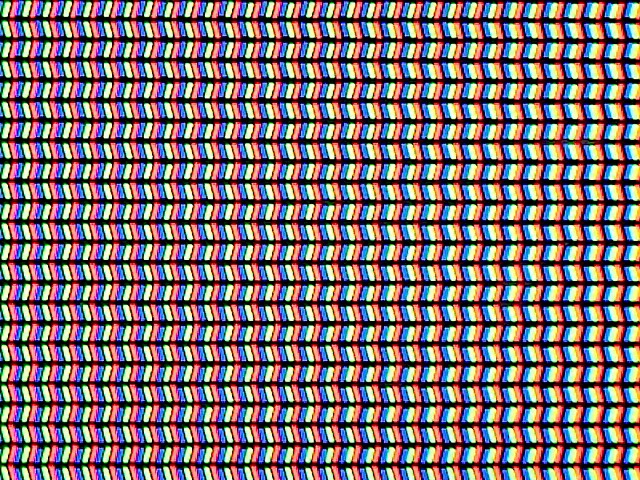

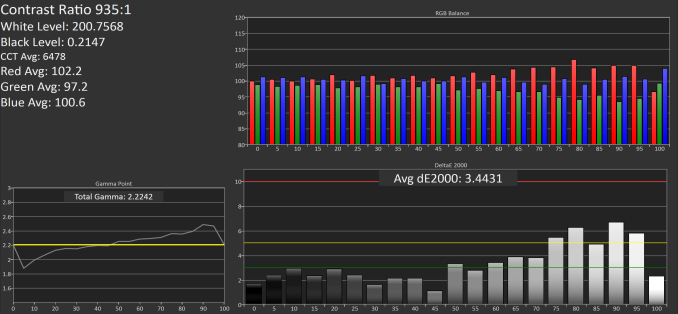

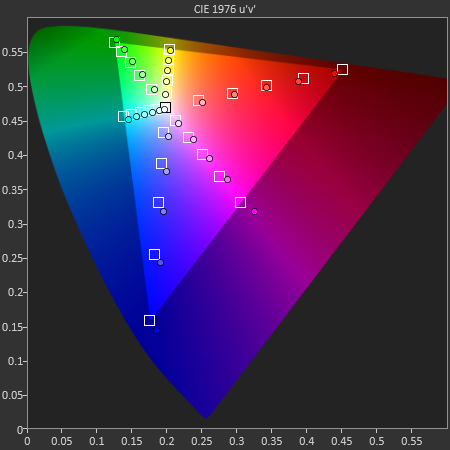
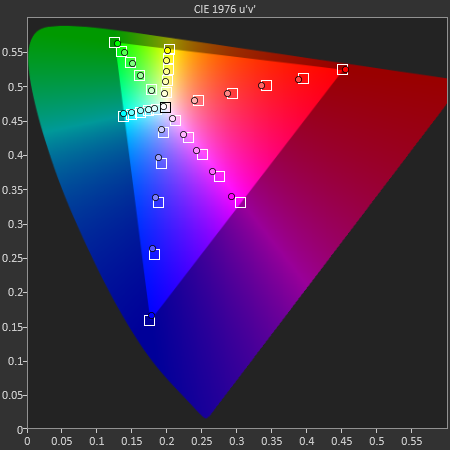
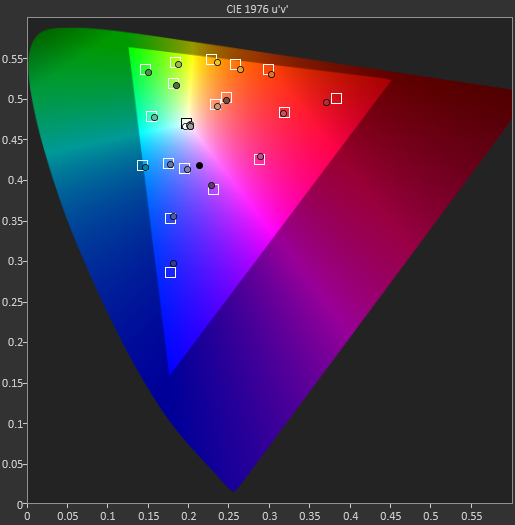
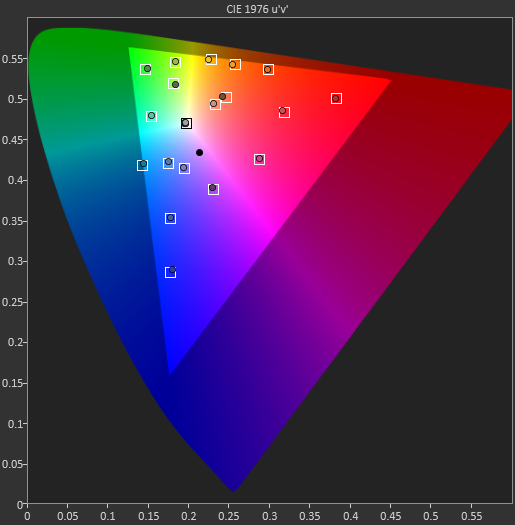








94 Comments
View All Comments
hans_ober - Friday, September 11, 2015 - link
Still no update on the MotoG 2015 charge time using a powerful charger... seriously?wliles3 - Friday, September 11, 2015 - link
Please Review The Note 5 And Edge Plus.AussieinUS - Friday, September 11, 2015 - link
Thanks for a detailed review. I have the Note for 6 months now and use it on Tmobile in the US (no LTE) and Vodafone in Italy. It works very well. The review mirrors my experience down to the slippery and now cracked glass back. The advice on a cover came too late. My biggest challenge has not been the battery, the good camera, the video playback, or the google play services. It has been trying to get the change to the Mi Account for the auto sign in. It wants to use my now defunct Italian number and not the new number. It constantly tries to sign in. I have changed the browser based credentials for Mi Account but it cannot be accessed from the mobile. Claims by Xiaomi that they will get back to me within 3 days based on a "lost password" on the device results in nothing. It still works but is constantly trying to signin. This speaks to tech support away from the mothership. Thanks for this review and the constructive comments.eriri-el - Friday, September 11, 2015 - link
I have a slight beef here regarding fast charge support. I own the Mi Note (non-Pro) and its charging time is more or less in line with what is shown in this review. But as for it not supporting fast charging, my Mi Note came bundled with the MDY-03-EB charger which is rated for 5V/2A as well as 9V/1.2A. According to the Qualcomm website on Quick Charge, both the charger and the Mi Note is certified for Quick Charge 2.0. given that it "just" supports 9V/1.2A, I think it doesn't charge that fast, but that doesn't mean it doesn't support QC, unless of course Qualcomm is lying to us.eriri-el - Friday, September 11, 2015 - link
Reference: https://www.qualcomm.com/documents/quick-charge-de...Xiaomi is at the bottom of the list in the pdf file
extide - Saturday, September 12, 2015 - link
It seems the hardware is definitely there for the support, but they may have disabled it as a way to differentiate between it and the Pro. Kind of an odd thing to do, but oh well.Peichen - Friday, September 11, 2015 - link
The best selling Android phones have always been those that look and feels like an iPhone except cheaper and with dual-SIM and SD card. It is no wonder the Biggest and 2nd biggest Android OEMs releases phones that's basically iPhone 6.5As for Mi Note. I like it but feel $470 is getting too expensive for a phone that's not spectacular. $400 for the Pro model would be more app.
babadivad - Friday, September 11, 2015 - link
How do you guys get the close ups of the screens like that? I want to try that with my phone. I've always thought that was so cool. It was one of the reasons I stayed around with you guys since the launch of the Note 2. I like the thorough way you do the phone reviews and the close up on screens to check for changes to sub-pixel placement and changes from year to year of the same line. So cool.edwpang - Friday, September 11, 2015 - link
This review leaved out a very important area: call quality and data support. I am not keen on LTE. I am fine as long as I can use 3G on my Rogers network.melgross - Friday, September 11, 2015 - link
Another Chinese government supported company. It would be nice if web sites reviewing these devices from Chinese companies did a bit of research as why their prices are where they are